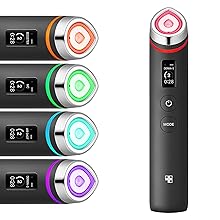
How Hamilton students mapped lava tubes in Iceland using a drone named Canary
CBC
A McMaster University research team says despite rain and colder-than-expected weather, their expedition to Iceland was a success and they were able to map lava tubes with the drone-mounted system they developed.
As CBC Hamilton reported in July, the McMaster Deep-space Analogue Research Expedition (DARE) team spent a year planning an expedition to unnamed lava tubes near the popular Surtshellir lava cave to test their technology.
The mission took over two years to plan, Michael Holden said, and "seeing all of that come together," was the best part.
He spoke with CBC Hamilton alongside his teammates Daniel Young, Harry Wu and Harmil Kalia, who all went on the trip.
Holden, the club's outgoing president, served as the drone's main pilot. Young was responsible for software, Wu was in charge of electrical and Kalia led a side project growing different plants.
Having trained with a wilderness first-aid business, the crew camped outside the lava tube for about 10 days.
The team flew their drone named Canary three or four times each day, pairing off and alternating between flying inside and waiting outside the caves.
For Young, the best part of the trip was the first time the team entered a cave. "It was just seeing the size of it and realizing we were finally there."
Inside the caves it was pitch dark. Some passages were only double a person's height. Others were significantly wider.
You're kind of enveloped in a dark silence," Kalia said.
With headlamps, they could see that the walls and ceilings of the cave were lined with rock formations. Kalia said some were glassy but others were rough and likely formed by slow moving lava.
"I thought that these formations told a cool story," he said.
Iceland's geography has made it popular for analog missions, which refer to experiments in environments similar to those in outer space.
While they had to map a few tight corners by hand, Canary worked well, Holden said, adding he never crashed the drone — something he had wanted to avoid.

It's been over 50 years since Brian Anderson was convicted of a murder he didn't commit, almost two since his name was finally cleared and about 14 months since he sued all three levels of government in hopes of getting compensated for everything he lost — but after all that time, he says neither he nor his co-accused have seen a cent.





















 Run 3 Space | Play Space Running Game
Run 3 Space | Play Space Running Game Traffic Jam 3D | Online Racing Game
Traffic Jam 3D | Online Racing Game Duck Hunt | Play Old Classic Game
Duck Hunt | Play Old Classic Game










